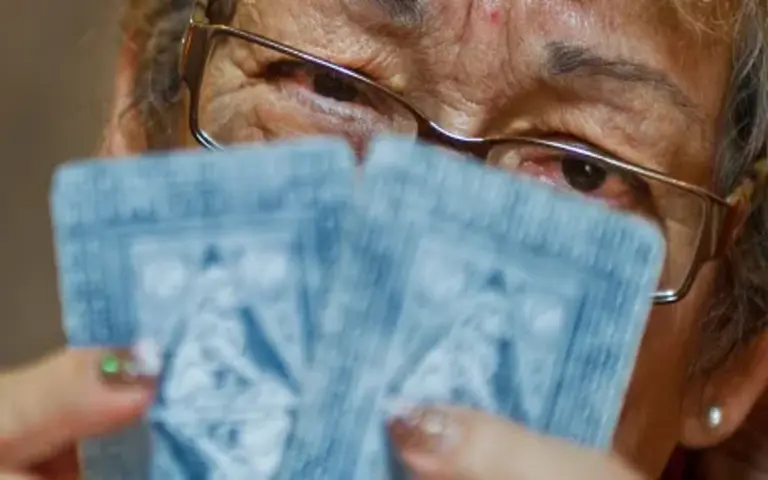1. Introduction
Tarot reading is an ancient practice that has fascinated people for centuries. It has evolved from a simple card game into a powerful tool for introspection, guidance, and spiritual enlightenment. Many seek tarot readings to uncover insights about their past, present, and future. The practice continues to grow in popularity as more people explore alternative methods of self-discovery. In this article, we will explore the historical origins of tarot and its continued relevance in today’s world.
2. The Historical Roots of Tarot
The origins of tarot can be traced back to the 15th century in Europe, where the earliest tarot decks were created for playing a game known as “Tarocchi.” These decks featured beautifully illustrated cards that later attracted the interest of mystics and scholars. By the 18th century, tarot had transitioned from a simple game to a divination tool used for spiritual exploration. Occultists in France and England incorporated tarot into their esoteric traditions, associating it with astrology, Kabbalah, and alchemy. Over time, tarot became a recognized practice in mystical and spiritual circles.
3. The Evolution into a Divination Tool
As interest in mysticism and spiritualism grew, tarot became more than just a game. Scholars and mystics such as Antoine Court de Gébelin and Éliphas Lévi helped popularize the idea that tarot had hidden meanings linked to ancient wisdom. The tarot deck was soon seen as a mirror of human consciousness, capable of revealing hidden truths. The Rider-Waite-Smith deck, created in 1909, became one of the most famous tarot decks, further cementing tarot’s role in divination. Today, tarot readings are used to explore life’s mysteries and provide insight into personal challenges.
4. Structure and Symbolism of Tarot Cards
A standard tarot deck consists of 78 cards, divided into the Major Arcana and Minor Arcana. The 22 Major Arcana cards represent significant life lessons and spiritual evolution, depicting archetypal figures such as The Fool, The Magician, and The High Priestess. The Minor Arcana, divided into four suits (Cups, Wands, Swords, and Pentacles), represents everyday situations and challenges. Each card carries deep symbolism, with colors, numbers, and imagery playing a key role in interpretation. This layered meaning makes tarot an intricate and profound tool for guidance.
5. Tarot Reading in the Modern Age
Today, tarot readings have expanded beyond mystical practices and are widely used for self-reflection and personal growth. Many people turn to tarot for guidance in making life decisions, understanding relationships, and gaining deeper insight into their subconscious thoughts. Some use tarot for meditation and journaling, while others see it as a way to connect with their higher self. With the rise of mindfulness and self-care practices, tarot has become an accessible and valuable tool for those seeking clarity and wisdom.
6. Digital Age and Tarot Readings
With technology playing a major role in modern life, tarot has adapted to the digital world. Online tarot readings, mobile apps, and AI-generated tarot interpretations have made it possible for people to receive readings from anywhere in the world. Social media platforms have also contributed to tarot’s popularity, with readers sharing daily card pulls and insights. Virtual tarot communities allow individuals to learn, share, and practice their skills, making tarot more accessible than ever before. Despite its traditional roots, tarot continues to evolve to meet the needs of a fast-paced society.
7. The Psychological and Therapeutic Aspects
Modern psychologists recognize tarot as a valuable tool for self-reflection and therapy. Tarot readings can act as a form of narrative therapy, helping individuals explore their emotions, thought patterns, and personal challenges. The imagery and symbolism of tarot cards often serve as prompts for introspection, allowing individuals to process their experiences and emotions. Therapists and life coaches incorporate tarot into their sessions to help clients visualize possible outcomes and reframe their perspectives. This therapeutic approach reinforces tarot’s role as a tool for mental and emotional well-being.
8. The Spiritual and Intuitive Connection
For many, tarot is more than just a means of self-reflection; it is a deeply spiritual practice. Tarot readings are often used as a way to connect with higher consciousness, divine wisdom, or spirit guides. Some practitioners incorporate meditation and rituals into their readings to enhance their intuitive abilities. The cards serve as a conduit between the conscious and unconscious mind, allowing individuals to receive messages that resonate with their spiritual path. Whether one views tarot as a sacred practice or a psychological tool, its ability to inspire personal growth is undeniable.
9. Ethics and Responsibility in Tarot Reading
As the practice of tarot reading grows, ethical considerations remain crucial. A responsible tarot reader ensures that their readings are empowering, respectful, and non-fear-based. Ethical tarot readings avoid making absolute predictions and instead focus on guiding individuals toward their own wisdom and choices. Readers must also respect the privacy and autonomy of their clients, maintaining confidentiality and setting clear boundaries. By upholding ethical standards, tarot practitioners contribute to a supportive and responsible spiritual community.
10. Conclusion
Tarot reading has a long and fascinating history, evolving from a simple card game into a revered tool for spiritual and personal exploration. Its relevance in the modern age continues to grow as people seek alternative ways to gain clarity and insight. Whether used for guidance, self-reflection, or spiritual enlightenment, tarot remains a timeless practice that bridges ancient wisdom with contemporary self-discovery. As technology and psychology continue to integrate with tarot, its influence will only continue to expand, offering wisdom to those who seek it.

